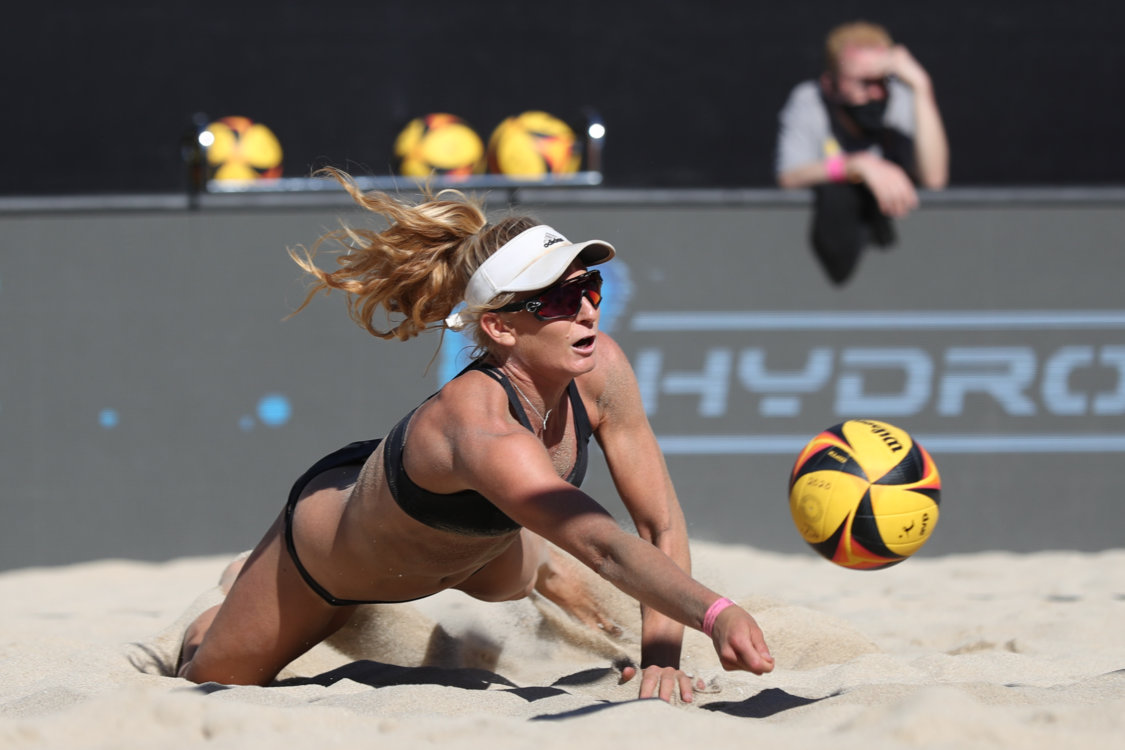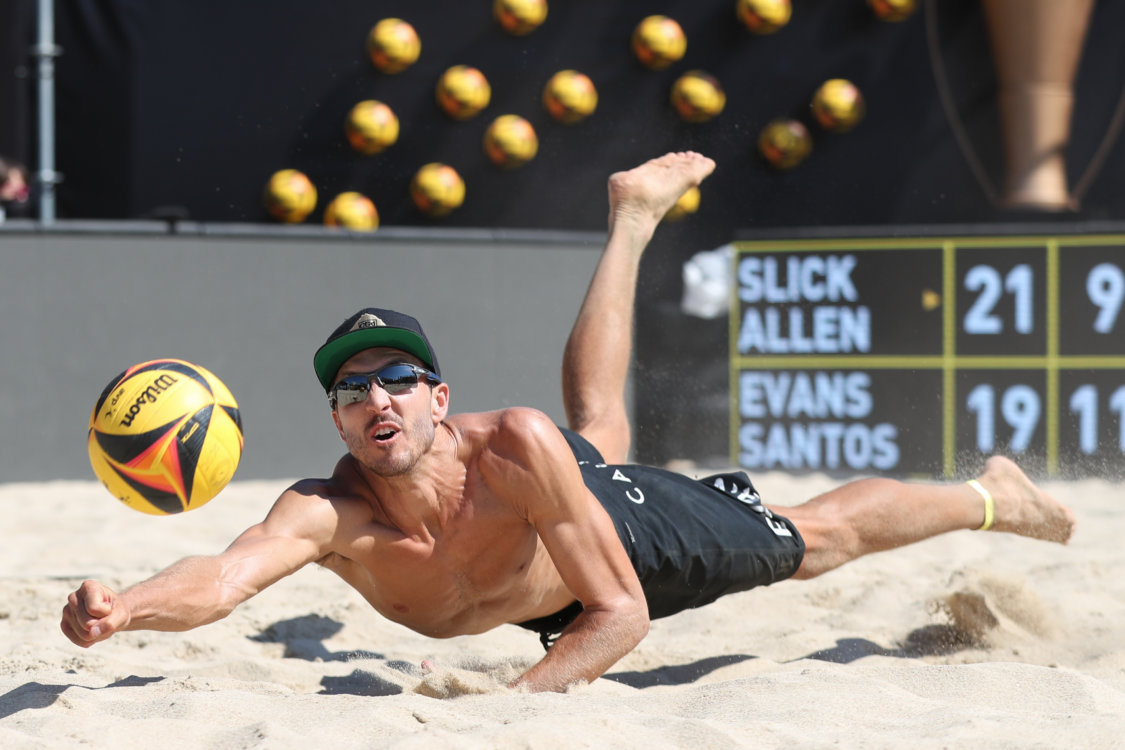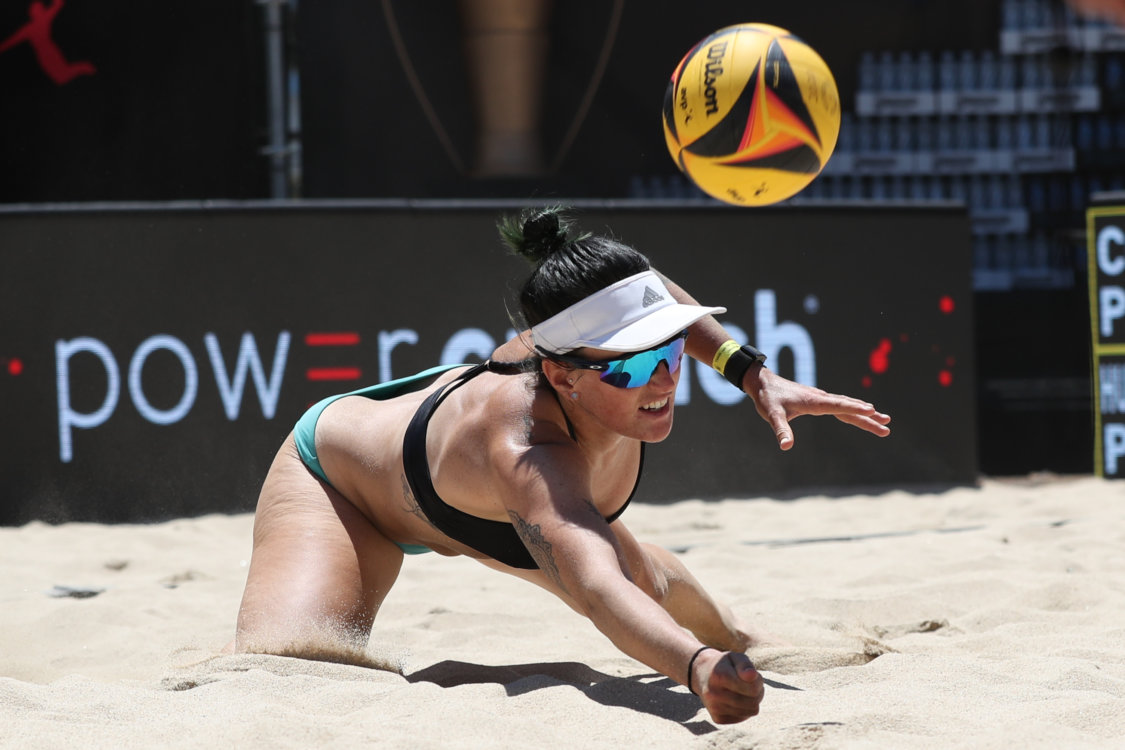The best defenders in the world – Olympians like April Ross and Nick Lucena or future Olympians like Melissa Humana-Paredes and Taylor Crabb – play on our AVP Tour. They put on clinics every time they step on the court, racking up impossible digs, springing off the sand, and putting the ball away. And while I am not a back-court defender, every beach player needs to know how to dig a ball.
I covered blocking a couple of months ago (my favorite). Now, we’ll dive into the world of digging (my nemesis). Digging requires epic speed and quick reactions. You need to be in the right place at the right time but always poised to change your plan and run down a shot.

The best teams tailor their defensive strategy to their current opponents. And it’s not always in a scouting session before the match. Great teams gather data throughout the game, letting their opponents snag points here and there to learn more about their tendencies. The score is fine to remain close until the 14-14 switch, and then it’s time to turn it on.
Because of this, it’s hard to say what the proper base defensive positions are. Where you line up depends on who you’re playing and where they like to hit. And sometimes that will change based on how they’re feeling that day. Alix Klineman can bang a ball where most people place their cut shot; if she’s feeling that hit in your match, it’s time for the defender to take a step up and play shallower. If Katie Spieler keeps getting you with deep shots and jumbos to the backline, the defender needs to take a step back and be ready for that.

So while I won’t give ultra-specific tips on digging, here are a few universally accepted ideals:
- Digging and passing form are the same – straight platform, take the ball on your forearms, pass high and towards the net. Digging can happen where you set up, as you’re running something down, or in a scorpion-like dive popular with Sarah Sponcil. Digging takes on more varying forms than serve receive passing because of how fast the ball is coming.
- One-arm Stab: this is a quick defense against a powerful spike, the throw-your-arm-out-and-hope-something-good-happens move. For best results, keep your one-arm platform straight and take the ball on your forearm.
- One-arm Scoop: this is the one-arm move reserved for shots. Once a defender gets to the ball, they need to scoop it off the sand, giving it momentum so it’s nice and high for their tall blocker to set or attack. There’s a swinging motion here, which I don’t recommend in other types of digging. But the one-arm scoop is a last-ditch effort to keep the ball off of the sand.
- Overhand Dig: these most often come from blockers who pull (which we’ll cover in a future article). As the name suggests, they’re digs taken with your hands (almost like a setting motion) over your head (or sometimes in front of your face or chest). For hard-driven hits, overhand digs can be lifts and doubles, which is pretty cool. It’s considered a “reaction” and, therefore, a legal move. As such, you can essentially grab and throw the ball up. Sounds easier than it is, and you have to make it one motion. But this rule makes a unique and convenient aspect to overhand digs. Make sure the hit is hard-driven though because overhand digs will get called as lifts or doubles if the hit isn’t hard-driven (i.e. a shot or a hit that bounces off the net). If that happens and your hands are already ready to overhand dig, it’s time to switch to a pokey or tomahawk.
- Pokey Dig: pokey digs are hard to master but effective for high-loopy shots. Your hand does the same thing as when your poking on offense (two or more knuckles bent to create a solid platform). Because you’re poking the ball, it’s one quick motion without a chance for doubling. This is why it’s perfect for a shot.
- Tomahawk Dig: one of the rarest digs, but they’re helpful in a pinch. To tomahawk a ball, you sandwich your hands together as in prayer (which you better also say because these digs are hard to control) and contact the ball with the pinky side of your hands above your head. You have to swing up, almost like a quick chop motion on the ball, which is why it’s called a tomahawk.
- Chesty Dig: these are not recommended (especially for women), but sometimes it’s the only flat surface available when a hard-driven hit is coming at you. Taylor Crabb has mastered this one.
- Face/Sunglassed Dig: very much not recommended, but occasionally successful. The name (that I just made up) should speak for itself.
- The ideal dig is moderately high and forward, close to where the blocker lands so they can turn and set or attack the ball. You want to cushion the impact of the hit if it’s hard-driven to keep the dig on your side of the net. If your opponent sends a shot that you read and are already where they shoot it, you’ve essentially received a free ball – congratulations. If you’re running down their shot, you need to gauge the amount of momentum required to get the ball where you want it to go. I know it sounds super hard, and I assure you: it is.
- You never want to line up in your base defense in the space that your blocker is taking. There are only two of you defending the whole court, so you need to make sure you don’t double-down on the same spot. There is a time to double-down (i.e., when playing against a one-dimensional player or someone who keeps beating you with the same offensive move every time), but most of the time, defenders should line up outside their blocker’s hands.
As with all skills, it’s best to get out there and practice. Digging is such an unpredictable art. Each game will determine where you set up and what kind of digs you’re going to employ most often. But you can always practice with just a ball, a net, and a buddy. Have a friend fire attacks at you, changing up where they go and the speed of each. Or to practice cushioning the impact by yourself, hit against a wall, and dig your ricochet.
There are a million ways to practice this game, which is one of the reasons I love it so much. The accessibility is unmatched. If you have the drive to learn, you can make it happen. So as always – get out there and get those reps in!
